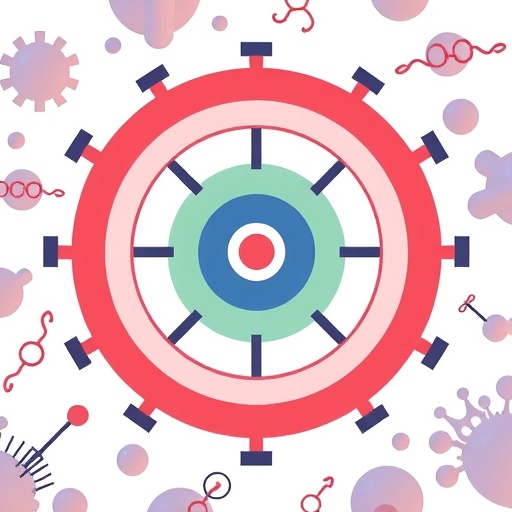Credit: US Department of Energy, Ames Laboratory
Scientists at the U.S. Department of Energy’s Ames Laboratory have developed a new microscopy approach for imaging gel nanocomposites in their natural state, which will reveal more useful information about their assembly and properties.
Researchers are excited about imaging nanoparticles in poloxamers, a group of oddly-behaving polymer materials that are liquid at low temperature and a gel at higher temperatures. Because of their interesting phase behavior, these gels show promise in potentially acting as a matrix medium for arrangement of nanoparticles within these gels to obtain materials with interesting optical properties. However, currently, it is very difficult to image nanoparticles within a gel environment.
Like the old idiom “nailing jelly to a wall,” getting a close and accurate look at how these nanoparticle-and-gel systems organized themselves has proven difficult for scientists who want to learn more about their properties and how to control them.
“It’s basically a goo. It’s like honey when cold, and at warmer temperatures it sets into a something like Jello,” said Tanya Prozorov, a scientist in Ames Laboratory’s Division of Materials Sciences and Engineering. “It’s a state of matter that doesn’t lend itself well to the thin samples we use in TEM (transmission electron microscopy). Attempting to look at freeze-dried, thin-layer samples of the gel isn’t ideal; valuable information gets lost.”
Using a new approach with fluid cell scanning/transmission electron microscopy, Prozorov and her colleagues used a molecular printer to deposit miniscule (femtoliter, one quadrillionth of a liter) volumes of poloxamer combined with gold nanoparticles, and observe them under controlled temperature and humidity.
###
The research is further discussed in the paper “New approach to electron microscopy imaging of gel nanocomposites in situ,” authored by Alejandra Londono-Caleron, Skrikanth Nayak, Curtis L. Mosher, Surya K. Mallapragada, and Tanya Prozorov; and published in Micron.
Ames Laboratory is a U.S. Department of Energy Office of Science national laboratory operated by Iowa State University. Ames Laboratory creates innovative materials, technologies and energy solutions. We use our expertise, unique capabilities and interdisciplinary collaborations to solve global problems.
DOE’s Office of Science is the single largest supporter of basic research in the physical sciences in the United States, and is working to address some of the most pressing challenges of our time. For more information, please visit science.energy.gov.
Media Contact
Laura Millsaps
[email protected]
Original Source
https:/




